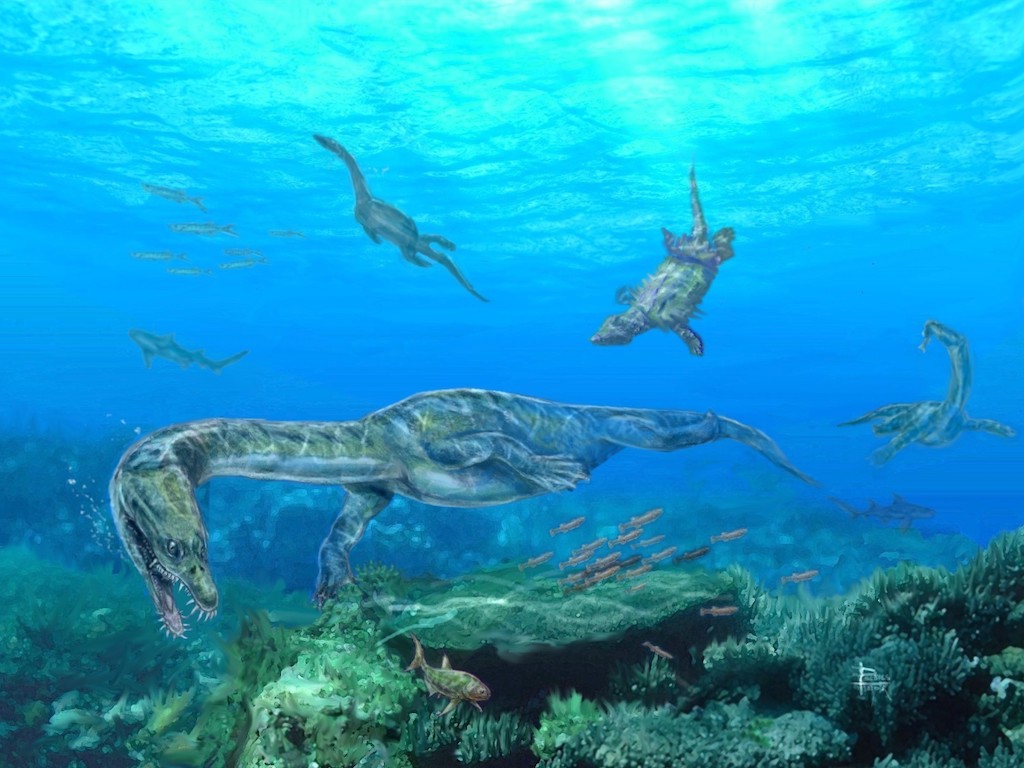
Eosauropterygian marine reptiles from the Triassic of Villány
The rock layers of the Middle Triassic Templomhegy Dolomite Member on Somssich Hill (Villány) – which were deposited in a shallow marine environment…
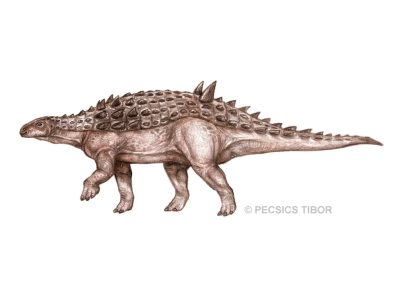
For a long time it was thought that the Iharkút dinosaur fauna included only one armored dinosaur. The discovery of a complete upper arm bone (humerus) during the field work in 2012 challanged this view and shows that both in size and its anatomical features strongly differ from that of Hungarosaurus. The new bone, being only 21 cm, is relatively much more robust than that of Hungarosaurus and is more similar to the humerus of the small bodied ankylosaur, Struthiosaurus known from different Late Cretaceous localities of Europe (e.g. Eastern Austria, Southern France), so we referred the new Hungarian ankylosaur to this genus. Bone histological studies of the specimen indicate an mature animal, so its 2-2.5 m total body length refers to an ankylosaur almost two times smaller than Hungarosaurus.
With both Struthiosaurus and Hungarosaurus, Iharkút is the first European locality with two co-existing ankylosaurs.

The rock layers of the Middle Triassic Templomhegy Dolomite Member on Somssich Hill (Villány) – which were deposited in a shallow marine environment…
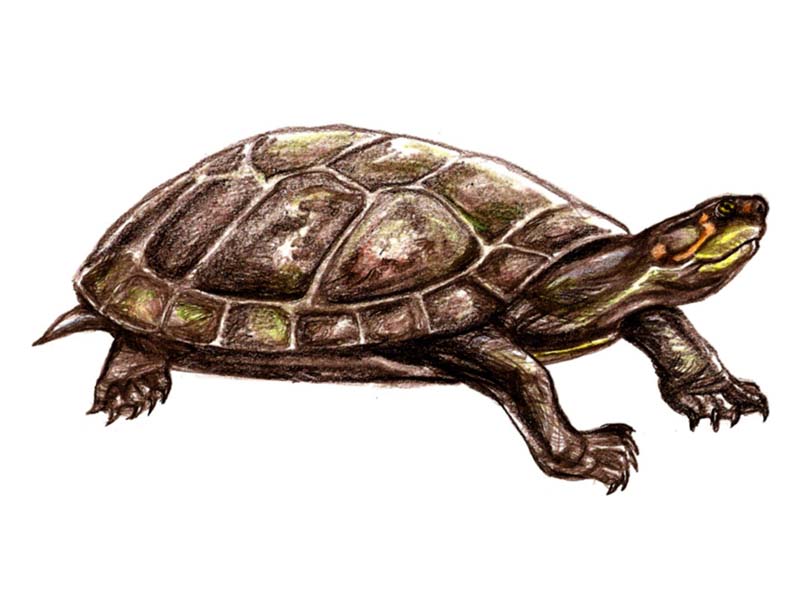
Named after the everlasting Trabant 601 cars what used on the field by our research group so many years…
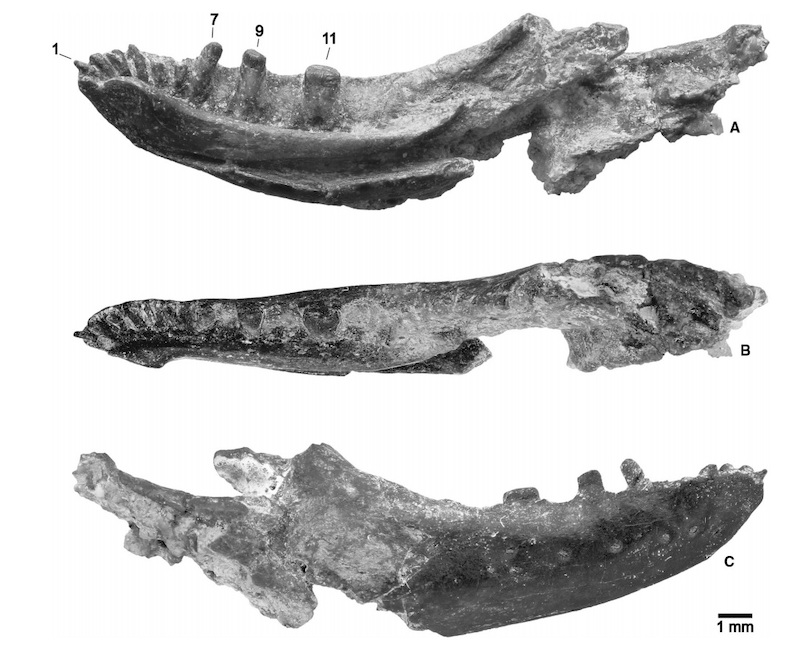
Chromatogenys tiliquoides, described as a new genus and species, is considered relatively rare among the Iharkút lizards…
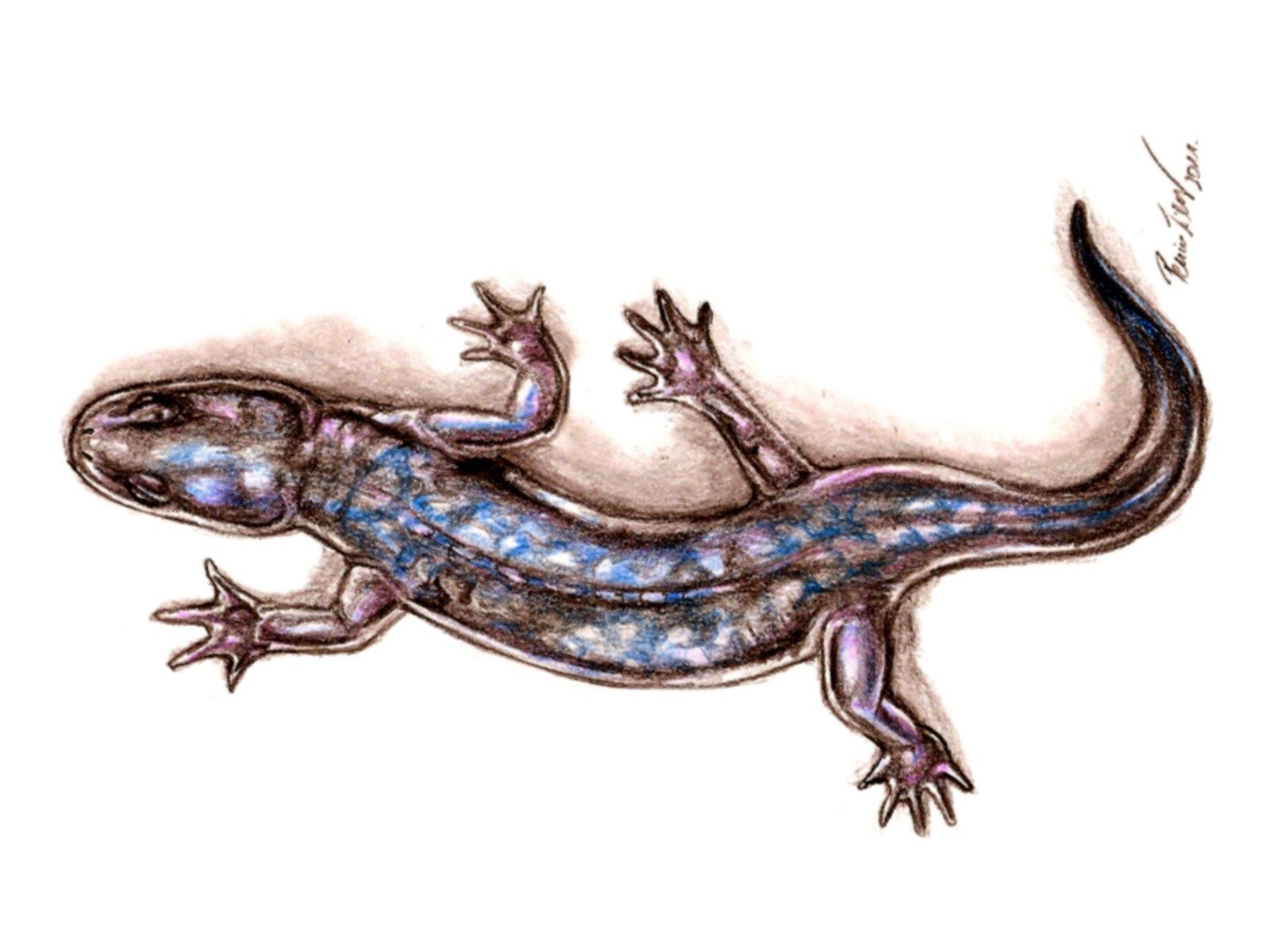
Albanerpetontids are salamander-like amphibians, the sister-group of salamanders and frogs and they lived during the Middle Jurassic to the Pliocene…